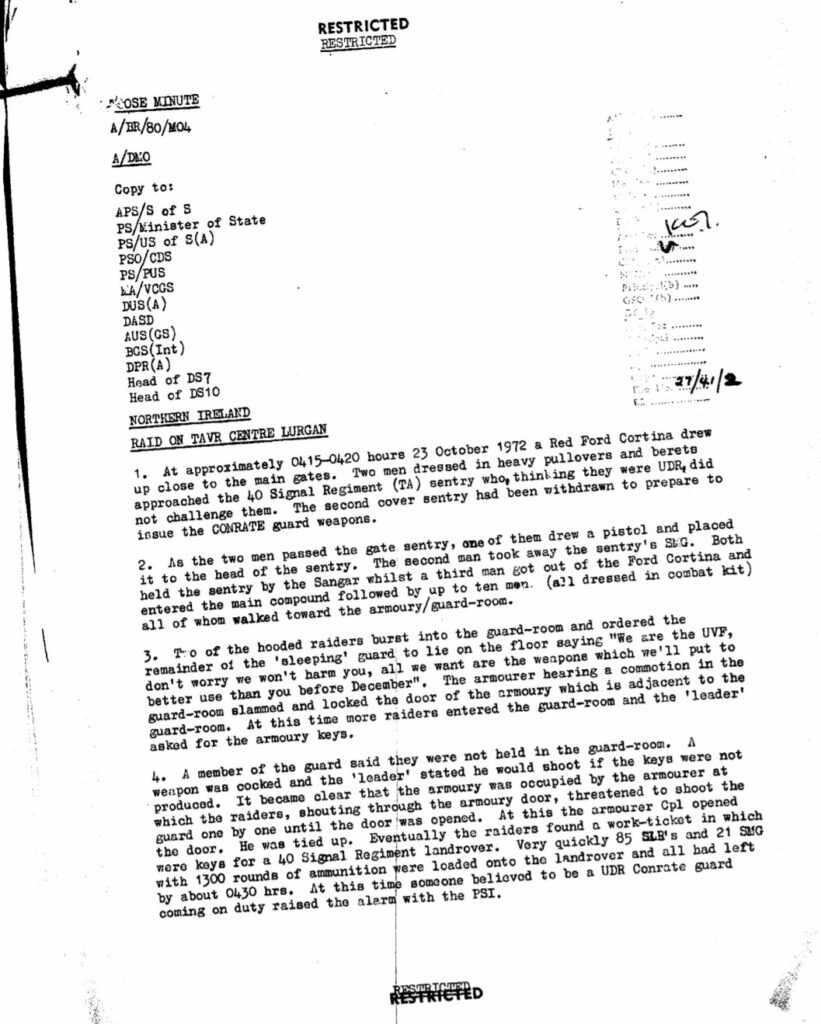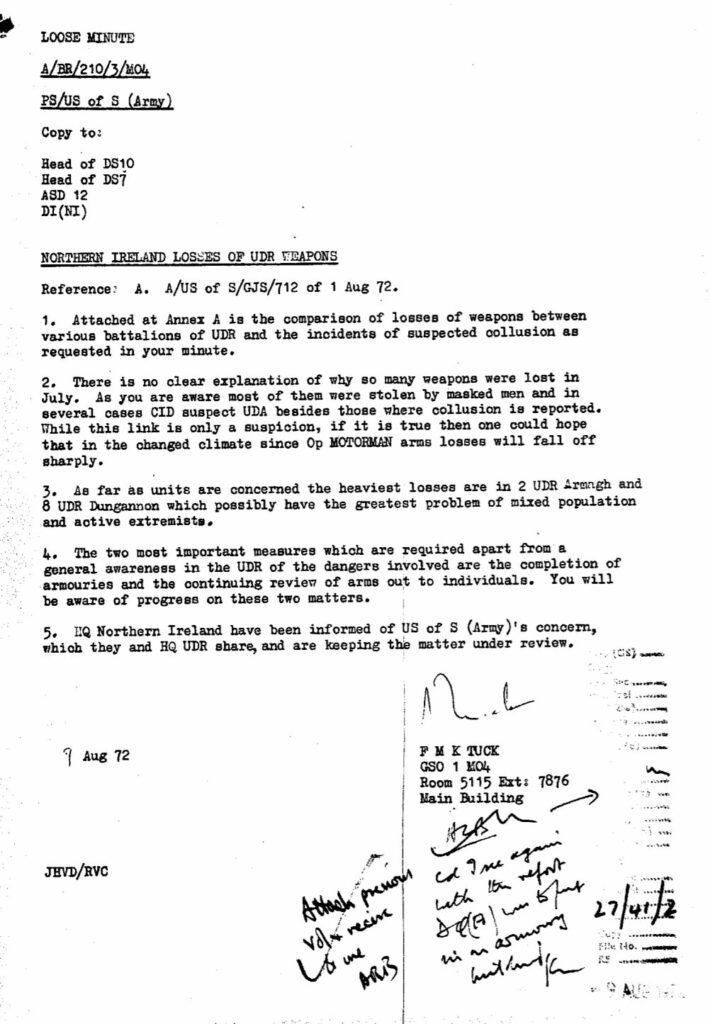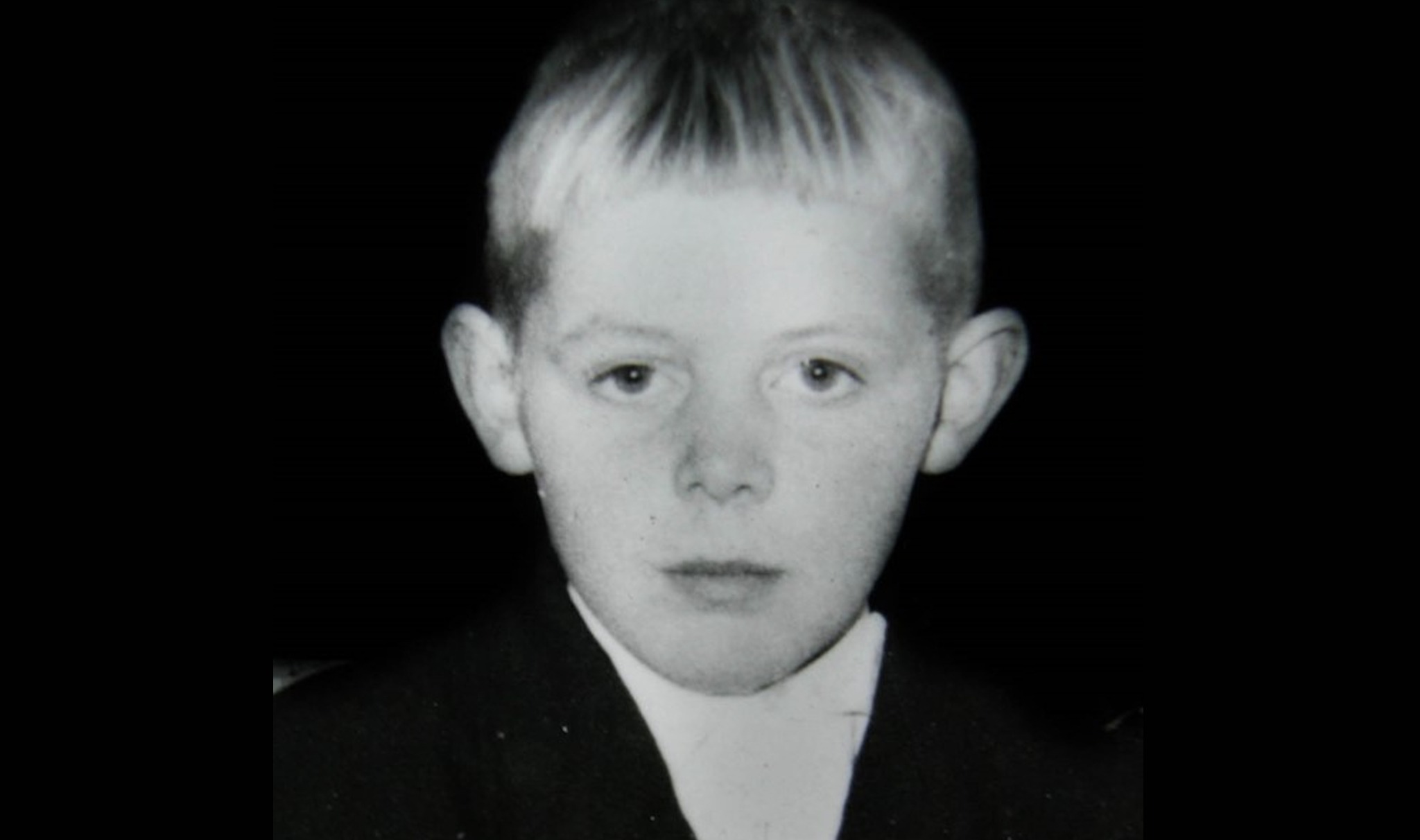Three loyalist gunmen, from a vantage point over the motorway leading north out of Belfast, open fire on a van they think is taking Catholic workmen home to County Donegal. A bullet goes straight through the heart of a 16-year-old boy sitting next to his brother in the front seat.
The murder weapon, a sub-machine gun, is British army issue. It is one of hundreds “gone missing” in Northern Ireland. The victim’s family is never informed. The police investigation lasts three weeks.
After almost half a century of silence with no acknowledgement or apology, the murder of 16-year-old Henry Cunningham and the army’s role in it, may finally be revealed when his family sue the authorities in Belfast High Court.
The story of Henry’s murder begins on a Friday evening in August 1973, when a green Donegal-registered Ford van drives from Belfast on its way to the remote town of Carndonagh, across the border, just as it had done every Friday for the previous four months.
The six workmen inside had spent the previous 16 weeks labouring on a building site in the Belfast suburbs. They included the three Cunningham brothers – Herbert, Robert and Henry, the youngest.
Robbie, who was due to play drums that night at a dance, was trying to get some sleep in the back of the van. His older brother, Herbie, was at the wheel. Henry sat in the front passenger seat, Robbie’s normal place.
The Cunninghams are Presbyterians who, like many men from unemployment-hit Donegal at the time, were forced to travel far from home to find work. It meant a 200-mile weekly round trip.
They were a mixed-denomination work-gang but, because the van was Irish-registered, the Ulster Volunteer Force (UVF) gunmen appear to have assumed everyone in it would be Catholic.
The British army effectively armed the two largest and most active loyalist paramilitary groups in Northern Ireland
As the Cunninghams drove under a bridge at the end of the motorway, the UVF gunmen were waiting for them. Shooting at them, like fish in a barrel, the attackers fired 33 times at the van.
Herbie still vividly recollects events. “I saw [them] firing at me, the flames flying out of the guns and …hitting the van. He [Henry] said to me ‘I’m hit’ and … slumped over. I think he took a minute to die. It was probably the nerves keeping him alive.”
The inquest revealed Henry had been struck by two bullets, in the leg and the heart.
Somehow, despite one of the tyres being blown-out by gunfire, Herbie managed to drive on for three miles before he came to a halt. The men ran through fields to a nearby house where an off-duty nurse came to their aid.
Henry, however, was already dead.
“We were roaring and crying. We were only young. We thought they were going to come to finish us off,” Herbie recalls.
Source of weapons
One of the two guns used in the attack was a Sterling sub-machine gun removed by the UVF during a raid on a Territorial Army Volunteer Reserve Centre in Lurgan, County Armagh, on 23 October 1972 when 83 rifles, 21 sub-machine guns and 166 magazines of ammunition were taken.

According to declassified documents discovered at the National Archive by the Pat Finucane Centre, the British army’s own view was that they may be “a traitor in the guard” and that collusion was possible.
The same British army weapon was also used in the double murder of two Catholic workmen a year later. Gunmen separated Catholics Terry McCafferty and Joseph McCluskey from their Protestant work colleagues during a lunch break and shot them at the back of a workmen’s hut.
These three murders have been linked to a very long line of “thefts” from the British army which effectively armed the two largest and most active loyalist paramilitary groups in Northern Ireland – the UVF and the Ulster Defence Association (UDA).
A Ministry of Defence assessment in August 1973 concluded: “Since the beginning of the current campaign the best single source of weapons (and the only significant source of modern weapons) for Protestant extremist groups has been the UDR” – the Ulster Defence Regiment, which was part of the British army.
That link will be subjected to legal scrutiny when the dead boy’s family sue the Ministry of Defence (MoD), the Secretary of State for Northern Ireland and the Chief Constable of the Police Service for Northern Ireland (PSNI) for gross negligence in failing to secure its weapons.
Collusion?
The hearing, one of dozens in the pipeline, is due to start in December and will continue into 2022 – unless London rams its proposed “statute of limitations” through the House of Commons closing down each and every legal route to justice for bereaved families.
Lawyers for the Cunningham family will argue that sufficient evidence exists to show that the gun used to kill Henry was far from an exception and that loyalists were able to routinely get their hands on British army weapons.
This, they will argue, establishes negligence, at best, and at worst, collusion, a word repeatedly used by British civil servants themselves in declassified documents dating back as far as 1972.
In August 1972, for example, a “loose minute” circulated within the MoD admits that collusion is “suspected” in a number of thefts from UDR bases. In July 1972 alone, 120 weapons were “lost” by UDR battalions. In 17 cases, collusion is “suspected”.

Evidence also exists that this was such a regular occurrence that weekly tabulated records were kept of weapons gone missing together with suspected levels of collusion.
There was never any doubt why the weapons were being taken – sectarian murder – as another declassified document, “Subversion in the UDR” makes clear.
In an annex, it lists “Terrorist Outrages In Which One of the Sub-Machine Guns Stolen in the Lurgan UDR/TAVR Centre Arms Raid on 23 October 1972 Has Subsequently Been Used” (the same raid where the weapon used to kill Henry Cunningham was taken).
The annex includes 11 separate attacks (or bullet finds) including a kidnapping, 11 attempted murders and one actual murder (in an indiscriminate sectarian attack in May 1973 on Muldoon’s Bar in the docks area of Belfast which was sprayed with bullets).
That murder victim was a British sea captain, Thomas Curry, from Preston, Lancashire, married for only six months, who had only gone ashore to post a letter. Nine others in the bar, who were injured, included two off-duty British soldiers.
Case closed
On the August evening Henry Cunningham was shot dead, his two brothers were brought to the local police station and then allowed to go home. Three weeks later, at around the same time as the inquest into Henry’s death (9 September 1973) the RUC (Royal Ulster Constabulary) closed their file on the case.
No-one was charged or convicted. No police officer has ever contacted the family. For over 15 years, until a friend said he had read about it in a book, the family believed the IRA were responsible.
Although the RUC must have known the ballistic history of the weapon used to murder Henry, they chose not to share that information with the family.
“No-one was charged or convicted. No police officer has ever contacted the family”
Both weapons used in the attack on the Cunninghams were recovered by the RUC in separate incidents in 1974. Despite being linked to a number of unsolved serious crimes, the RUC destroyed them in 1976 and 1978. It would appear that internal guidelines on ballistic testing of murder weapons were not followed.
Henry Cunningham’s life, and death, may never have been acknowledged by the state which supplied the murder weapon used by his killers, but he was never forgotten by his family.
Every year, secondary schools in the Inishowen area of Donegal are invited to an essay-writing competition on a human rights theme.
Robbie and Herbie Cunningham say they hope this allows young people to remember their brother in a “positive way”. They can never, they say, bring Henry back “but his name will forever be associated with the need to protect human rights – and that’s a good thing”.


